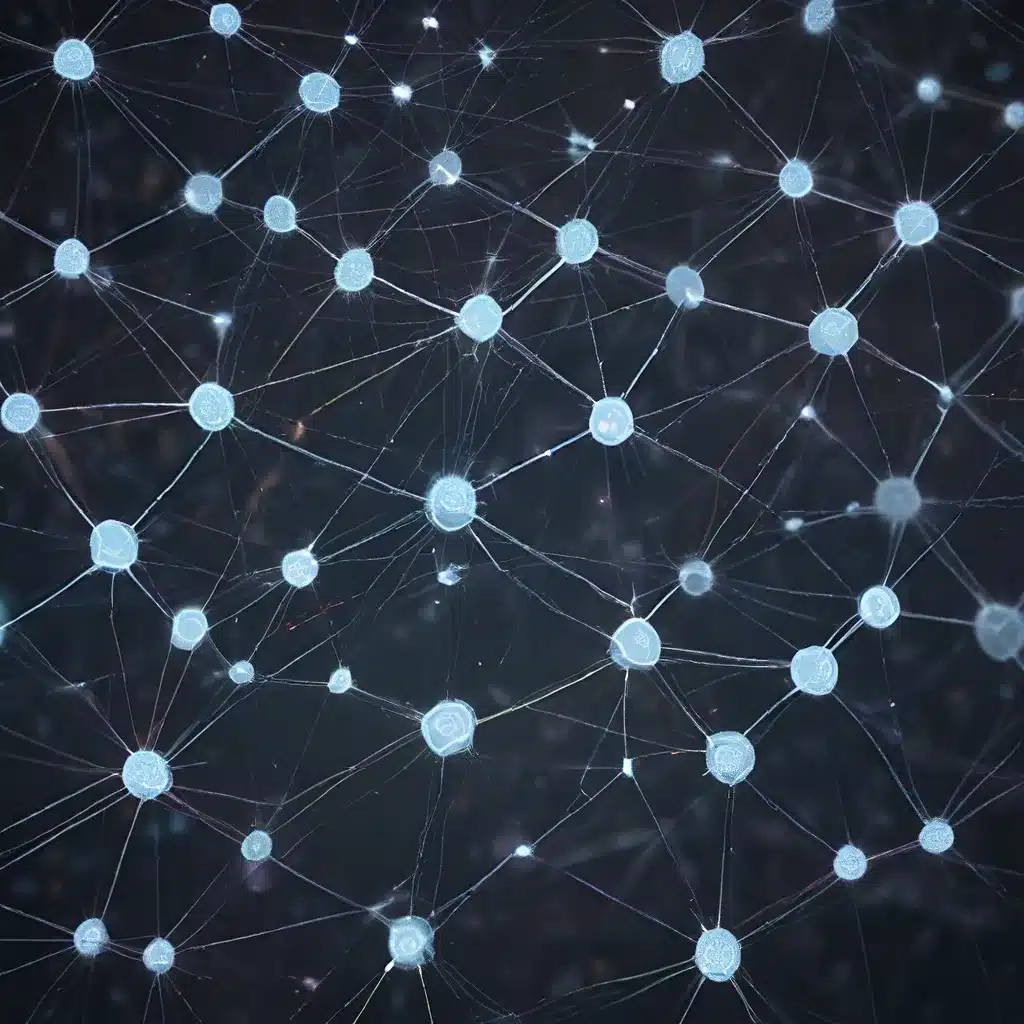
Sensor Networks: The Foundation of IoT Ecosystems
The explosion of data resulting from the propagation and interconnection of sensors and systems over the last decade has created unparalleled opportunities for enhancing the impact of AI and autonomous agents. These advancements have spurred a surge of research and development in the realm of sensor networks and their integration with the broader Internet of Things (IoT) landscape.
At the heart of this transformation lie the fundamental challenges of coordination, resilience, and optimization within distributed sensor networks. Researchers across various disciplines, including domain scientists, data scientists, and cyberinfrastructure experts, have converged to tackle these complex issues, paving the way for novel frameworks, synergies, and concepts that will redefine the future of sensor-driven applications.
Advances in Distributed Algorithms have emerged as a crucial aspect of this research thrust, enabling the design and selection of interoperable sensing, communication, and networking protocols. These algorithms play a pivotal role in ensuring that sensor networks can adapt, coordinate, and maintain mission objectives even in the face of attacks, failures, or adverse environmental conditions.
Optimizing Sensor Placement and Coordination
One of the core focuses in sensor network research is the development of optimal sensor placement strategies, leveraging techniques such as reinforcement learning. These approaches aim to maximize the coverage and fidelity of data collected by the network, particularly in challenging environments with poor visibility or complex terrain. By optimizing sensor placement, researchers can enhance collaborative perception and situational awareness, enabling more informed decision-making and autonomous operations.
Coordination strategies for multiple autonomous vehicles, such as Unmanned Ground Vehicles (UGVs) and Unmanned Aerial Vehicles (UAVs), have also been a subject of intense research. These strategies enable collaborative deep ground surveillance, allowing the sensor network to adapt to changing conditions and maintain mission objectives, even in the face of communication bottlenecks or performance challenges.
Moreover, the integration of knowledge representation and ontologies has emerged as a promising approach for enhancing the decision-making capabilities of sensor networks. By representing and reasoning over assets, networks, communication protocols, and mission contexts, these systems can dynamically infer strategies to maintain communication and mission objectives, even in the presence of attacks or failures.
Addressing Security Challenges in Sensor Networks
The ubiquity of cyber-physical systems, including sensor networks and IoT devices, has also created opportunities for adversaries to exploit, disrupt, or poison these systems to gain information advantages or cause disruption and harm. Harnessing data is essential to enabling and extending the capabilities of sensor networks, but it also introduces new security vulnerabilities that must be addressed.
Researchers are developing algorithms and methodologies for protecting against data and model poisoning attacks, securing autonomous vehicle systems (including UGVs and UAVs), and the corresponding communication networks that enable them to work in tandem. This includes demonstrating how inference attacks can be launched and prevented on AI-powered platforms, how unmanned assets and soldier-borne communication devices can be detected using encrypted network traffic data, and how army assets can be attacked using electronic control units, along with strategies to prevent such attacks.
Secure communication protocols and position locating mechanisms are also critical areas of research, ensuring that connected soldiers, vehicles, drones, and sensors can securely locate and share their real-time positions, even in the face of adversarial threats.
Energy-Efficient Sensor Network Design
In addition to security and coordination challenges, the energy management of sensor networks is a crucial consideration. Researchers are exploring techniques to optimize energy consumption and enhance the efficiency of sensing, communication, and coordination among heterogeneous agents within the network.
This includes the development of hierarchical episodic memory frameworks to store state-macro action pairs and improve the efficiency of episodic memory, as well as the characterization of performance bottlenecks in sensing, communication, and coordination. By addressing these energy-related concerns, sensor networks can operate more sustainably and effectively, extending their deployment and impact in a wide range of applications.
Sensor Networks in Action: Emerging Applications and Use Cases
The advancements in sensor network design and distributed algorithms have paved the way for a diverse range of applications, transforming various industries and sectors. From environmental monitoring and smart city infrastructure to precision agriculture, healthcare, and military applications, sensor networks are redefining the way we interact with and understand the world around us.
Sensor networks are enabling real-time data collection, anomaly detection, and predictive analytics in domains such as infrastructure monitoring, disaster response, and autonomous vehicle navigation. By integrating these networks with AI and machine learning capabilities, researchers are unlocking unprecedented levels of situational awareness, decision support, and autonomous decision-making.
Moreover, the convergence of sensor networks with 5G technology is opening up new frontiers for mission-critical applications, where reliable connectivity, efficient communication, and resilient sensing are paramount. Researchers are exploring intelligent radio resource slicing strategies and wireless connectivity requirements to ensure that sensor-driven systems can thrive in complex, contested multi-domain environments.
The Future of Sensor Networks: Challenges and Opportunities
As the world continues to embrace the transformative potential of sensor networks and IoT, researchers and developers must navigate a complex landscape of challenges and emerging opportunities. Security, energy efficiency, coordination, and resilience will remain at the forefront of this evolving field, as sensor networks become increasingly integral to the fabric of our digital and physical ecosystems.
Advancements in machine learning, data fusion, and semantic segmentation techniques will enable sensor networks to better interpret and respond to their environments, enhancing their utility across a wide range of applications. Multimodal sensor integration, multi-source domain adaptation, and transfer learning will further empower sensor networks to adapt to diverse and dynamic conditions, unlocking new possibilities for human-agent teaming and autonomous decision-making.
The future of sensor networks is undoubtedly exciting, with convergence and collaboration across disciplines driving the next wave of innovation. As the sensor-driven ecosystem continues to expand, researchers and innovators will play a pivotal role in shaping a more connected, intelligent, and resilient world, powered by the collective intelligence of sensor networks.